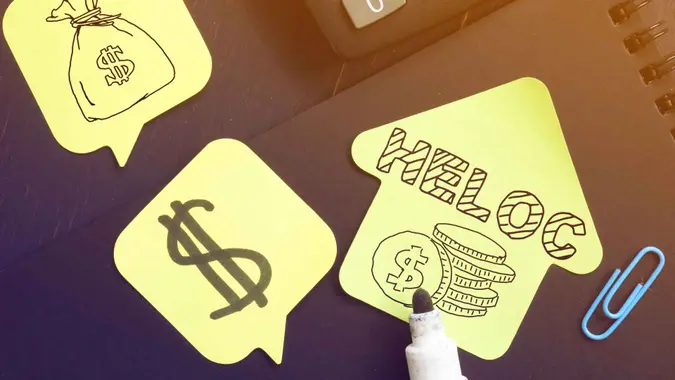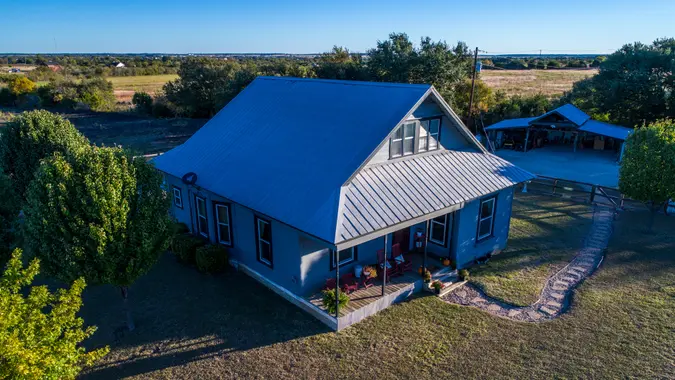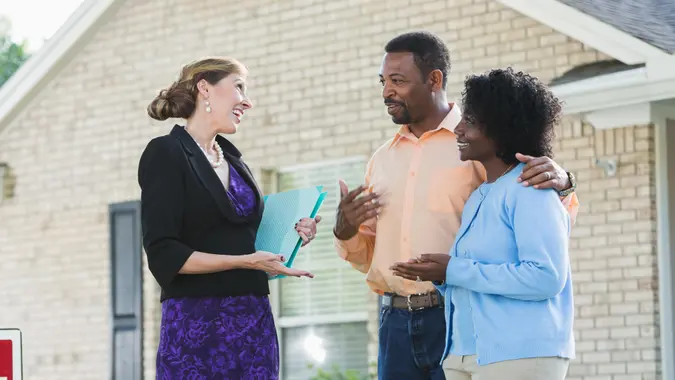4 Things To Know If You’re Selling Your House and Have a HELOC

Commitment to Our Readers
GOBankingRates' editorial team is committed to bringing you unbiased reviews and information. We use data-driven methodologies to evaluate financial products and services - our reviews and ratings are not influenced by advertisers. You can read more about our editorial guidelines and our products and services review methodology.

20 Years
Helping You Live Richer

Reviewed
by Experts

Trusted by
Millions of Readers
Home equity lines of credit (HELOCs) are more flexible and usually cheaper than home equity loans. That makes them a popular and potentially sensible way for homeowners to access the equity in their houses to finance everything from kitchen remodeling jobs to college tuition.
But what happens when you borrow against your property and then decide to sell it before you pay back what you borrowed?
Here’s what you need to know about listing a property when you have an active HELOC.
The House Goes to the Buyer. The HELOC Stays With the Seller.
Unlike home equity loans, HELOCs are not interest-accruing loans for fixed amounts of money. Instead, they provide an open line of available credit that borrowers can tap on an as-needed basis and pay interest only on the amount they use.
But HELOCs are like home equity loans in that they’re secured by the property. According to Experian, all active debts tied to the home must be paid off when the house changes hands, including HELOCs.
First Liens First
According to Experian, an active HELOC typically doesn’t complicate the sale process as long as the proceeds from the sale are sufficient to cover the HELOC’s outstanding balance.
At closing, either the title company or closing attorney will request a payoff statement from the lender that issued the HELOC. The statement will outline the amount required to settle the HELOC, including the outstanding balance, accrued interest and fees.
In most cases, the amount is deducted from the proceeds of the sale, but not before the first-lien mortgage, which gets top priority, is satisfied. Only then are secondary liens home equity loans, second mortgages and HELOCs paid off.
If the sale proceeds aren’t sufficient to cover the HELOC or any other loans you have against the property, you might want to consider reselling or you’ll have to come up with the cash to cover it out of pocket before the sale can go through.
The TRID Form Tells the Tale
Consumer protection legislation designed to prevent loan fraud provides an official accounting of all liens against a property up for sale — and HELOCs are liens.
The Truth in Lending Real Estate Integrated Disclosure (TRID) Act is a federal law enforced by the Consumer Financial Protection Bureau. You’ll receive a TRID form at least three days before closing outlining the payoff amounts for all active liens, including HELOCs, and any additional funds needed to close along with your net proceeds. Examine it closely to avoid surprises, budget accurately and ensure a smooth closing, but don’t wait until you’re that close to the finish line.
MSN suggests getting an accurate payoff amount before you even list your home and staying in touch with both your HELOC lender and mortgage lender throughout the process.
When You Sell, You Lose the Debt — and the HELOC
Figure Lending says that selling a house with an active HELOC can be financially empowering because it eliminates two significant debts at once — the mortgage on the property and the HELOC that the property secures.
That can dramatically reduce your debt, improve your credit score and open the door to new healthy borrowing options with better terms should you pursue another loan.
The tradeoff is that repaying the HELOC closes the line of credit that it provides and shuts off access to an open source of capital.
You can not transfer a HELOC from one property to another, so when you sell a property, you forfeit the financial flexibility it provides. However, if you buy a new property, your newly rehabilitated credit might buy you a better rate and better terms than you had before.
 Written by
Written by  Edited by
Edited by 

























